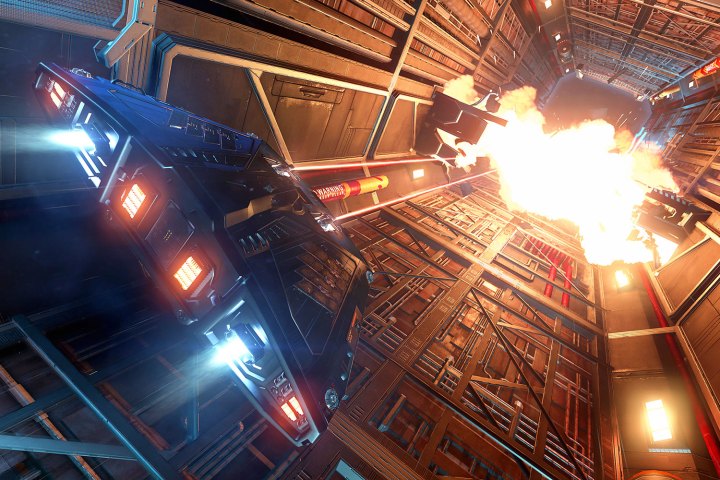
When Oculus first told the world what we’d need for VR, there was a little shudder among those with slightly outdated systems. You’ll need at least an i5-4590 we were told, as well as 8GB of RAM or more. The big one though was the minimum graphics card requirement of a Nvidia GTX 970 or AMD 290.
With Elite Dangerous, however, that’s taken to a whole new level. The minimum (not recommended) specs demand at least an Intel Core i7-3770K or an AMD FX 4350 and 16GB of RAM. Again though, it’s the GPU recommendation that really makes us quake, as it’s demanding at least a GTX 980 with 4GB of
The lack of an AMD recommendation is bizarre, especially since there was one for the CPU. For comparable 980 performance though, you’re looking at a Fury card from AMD at least (thanks TechReport).
That means that if you don’t have one of these cards already, you’re looking at around a $500 spend on top of the purchase price of the game and any more upgrades you may need to do. They also show the big jump in performance required to run something like Elite Dangerous in VR. By comparison, its non-VR variant (available now, here) requires just a GTX 470 and a quad core CPU of any type to run.
The reason for the big jump in hardware requirements isn’t of course just to do with rendering two versions of the same content, but concerns the frame rate. Commercial VR will require frame rates in excess of 90 FPS at all times. That’s difficult even for powerful systems, so it’s not that surprising that Frontier is hedging its bets on VR.
Plus it knows that all those early adopters will have money saved for the HMD anyway.
Editors' Recommendations
- This crazy monitor does VR without a headset — for a huge price
- You can now high-five in VR
- We have some bad news about Apple’s rumored VR headset
- It’s no gym. But VR fitness made sweating fun again
- Apple VR headset in the works, AR glasses coming later




